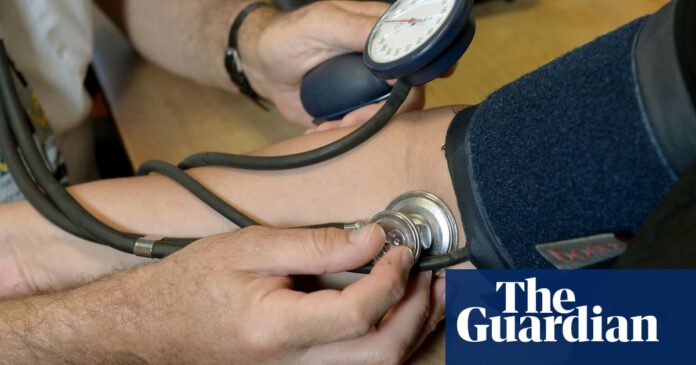Keir Starmer’s promise to “bring back the GP” is questionable as research shows more and more patients will not see a GP over the next decade.
By 2034, qualified GPs in England will carry out just 70% of all surgical appointments, down from 90% in 2015, the analysis predicts.
Patients will increasingly encounter a different type of healthcare provider, such as a nurse, physiotherapist or pharmacist, when they visit their practice, Frontier Economics predicts.
The increasing demand for care due to an aging population and the increase in lifestyle-related diseases, together with the trend of general practitioners working less than full-time, will mean that general practitioners will no longer be able to consult with everyone who wants to see them .
Matthew Bell, the director of Frontier Economics who led the research, said the government should help the public understand that traditional access to a GP will become harder to come by in the future.
The Prime Minister and Wes Streeting, the Health Secretary, have repeatedly promised to “bring back the GP” as a key part of their plan to revive the NHS. But, Bell said: “Under current plans, the experience of visiting your GP in the future will be different to what many think of as their GP. “With rising demand and current staffing plans, the proportion of GP appointments filled by a qualified GP is falling and will be even lower in ten years.”
Ministers must therefore “engage the public so that they understand that they may be seen by a wider range of experts in the future. With many more appointments in primary care, there will no longer be a qualified GP.”
Frontier’s findings are consistent with research published last month in BMJ Open. It concluded that the NHS in England was moving towards a ‘tipping point’, after which GPs would carry out fewer than 50% of all consultations because there were too few to meet the demand for care.
The NHS’s plans to restore previous levels of access to GPs have been beset by “risks and challenges”, Frontier found. Even in the best-case scenario – where the NHS’s long-term workforce plan delivers a much higher number of GPs and the Pharmacy First program leads to more patients with minor ailments going to a pharmacist instead – rising ill health would leave a ‘hole’ . between the demand for and supply of general practitioner care.
Helen Morgan, the Liberal Democrats’ health and social care spokesperson, said the NHS needed 8,000 extra GPs to facilitate the “return of the family GP”. “It is worrying to see that fewer and fewer patients will be able to visit their GP in the coming years unless we take action now,” she added.
after newsletter promotion
Morgan said everyone should be able to see a GP within a week, or within 24 hours if it was urgent, and she called for the return of the ‘appointed GP’ so people with complex needs could see the same doctor at every consultation.
“The Labor Government must now tackle this crisis by recruiting a further 8,000 GPs across the country so we can see the return of the family GP and so our NHS can be saved,” she added.
A spokesperson for the Department of Health and Social Care (DHSC) said the government had “inherited a broken NHS, with general practice neglected for years. We are committed to working with the NHS to restore the front door of our healthcare system and ensure everyone has access to GP services.”
Streeting has pledged to employ 1,000 additional GPs by the end of March to improve access. He had also put an extra £311 million into this year’s GP contract, the DHSC said.



